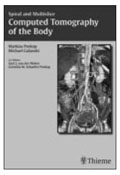The eLitMed.hu medical portal uses computer cookies for convenient operation. Detailed information can be found in the Cookie-policy.
Hungarian Radiology - 2003;77(03)
Content
[Role of ultrasound in the diagnosis of Crohn’s disease]
[INTRODUCTION - The peak incidence of Crohn’s disease is the second and third decades of life. Twenty-five percent of new cases occur in individuals less than 20 years of age. Typically the clinical presentation of Crohn’s disease is not different in children from in adults. The sudden onset of the disease with serious symptoms is not rare in pediatric patients The signs of acute abdomen, the rapid deterioration of the patient's physical condition needs urgent surgical intervention. Ultrasound is the first imaging method of choice can reveal specific signs of the disease and early accurate diagnosis can be established. The radiation burden can be decreased on this way and the unnecessary surgical intervention can be avoided. CASE REPORT - A child who presented typical signs of acute appendicitis was investigated first by ultrasound. Based on this investigation the diagnosis of Crohn’s disease was suspected, but unfortunately the adequate diagnosis was established only 5 months later after appendectomy and right sided hemicolectomy. CONCLUSION - Authors draw the attention to the importance of the ultrasound investigation in the diagnosis of Crohn’s disease in the childhood.]
[The diagnostics of paraoesophageal hiatal hernia]
[INTRODUCTION - The hiatal hernia is among the most common abnormalities of the gastrointestinal tract. The position of the cardia in relation to the diaphragm determines the type of the hernia, wich is important in therapy planning. The type I. sliding hernia is the most common form. Only 5-10% is type II. paraesophageal and type III. mixed hernias, which may involve serious complication. The single contrast X-ray is the best method for demonstrating the type of hiatal hernias. PATIENTS, METHODS AND RESULTS - During a 3 year period the author was investigated 336 gastric cases. Hiatal hernia was found in 73 patients, six of the cases proved to be the rare II. and III. types. A case of paraoesophageal and five mixed type cases of hernia is briefly described. CONCLUSION - Despite of the wide spread use of endoscopy in diagnosis of hiatal hernia, the traditional gastric X-ray still remains an important diagnostic tool.]
1.
Clinical Neuroscience
[Headache registry in Szeged: Experiences regarding to migraine patients]2.
Clinical Neuroscience
[The new target population of stroke awareness campaign: Kindergarten students ]3.
Clinical Neuroscience
Is there any difference in mortality rates of atrial fibrillation detected before or after ischemic stroke?4.
Clinical Neuroscience
Factors influencing the level of stigma in Parkinson’s disease in western Turkey5.
Clinical Neuroscience
[The effects of demographic and clinical factors on the severity of poststroke aphasia]1.
2.
Clinical Oncology
[Pancreatic cancer: ESMO Clinical Practice Guideline for diagnosis, treatment and follow-up]3.
Clinical Oncology
[Pharmacovigilance landscape – Lessons from the past and opportunities for future]4.
5.















